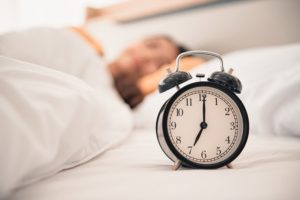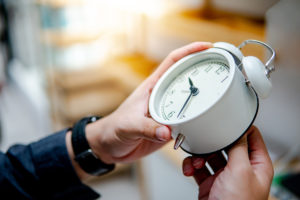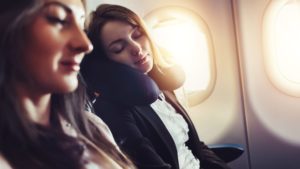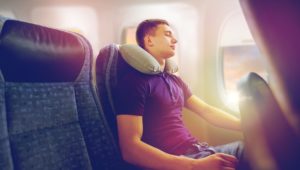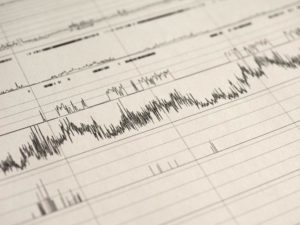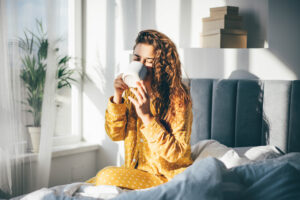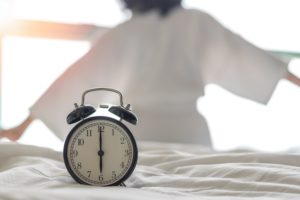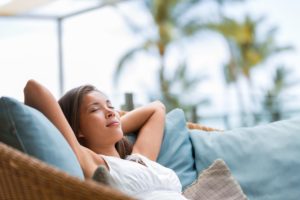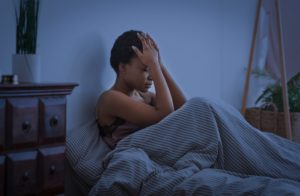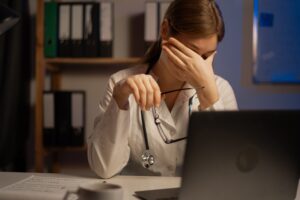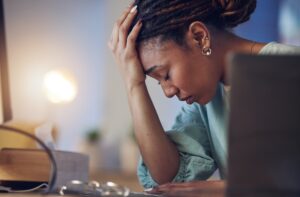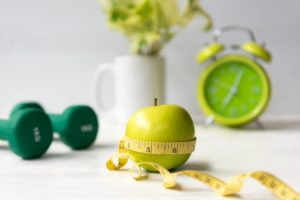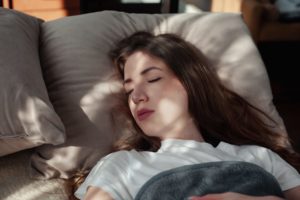When you buy through our links, we may earn a commission. Products or services may be offered by an affiliated entity. Learn more.
Sleep Drive and Your Body Clock
- Your natural sleep-wake cycle is regulated by an internal clock: your circadian rhythm.
- Sleep drive, or the need for sleep, increases the longer you are awake.
- Aging, hormone imbalances, and disruptions to your circadian rhythm can increase your sleep drive.
Have you ever noticed that you feel more alert at certain times of day, and feel more tired at other times? Those patterns are a result of two body systems: sleep/wake homeostasis and your circadian rhythm, or internal body clock. These systems determine your sleep drive, or your body’s need for sleep, at any given time.
Sleep/Wake Homeostasis and Sleep Drive
Homeostasis describes a state of equilibrium between different elements of an organism or group. Sleep/wake homeostasis balances our need for sleep, called a “sleep drive” or “sleep pressure,” with our need for wakefulness. When we’ve been awake for a long period of time, our sleep drive tells us that it’s time to sleep. As we sleep, we regain homeostasis and our sleep drive diminishes. Finally, our need for alertness grows, telling us that it’s time to wake up.
If sleep/wake homeostasis alone regulated our sleep drive, we’d likely find ourselves yo-yoing between sleep and alertness throughout each day. We’d also likely feel most alert in the morning, with that alertness wearing off the longer we were awake. Instead, we can feel just as alert at 4:00 p.m. as we might have felt at 10:00 a.m., even when we’ve been awake for hours. That’s because sleep/wake homeostasis doesn’t work alone in regulating our sleep schedule; our circadian rhythm also plays a role.
Sleep Drive and Circadian Rhythm
Our circadian rhythm approximates a homeostasis in coordination with environmental cues like sunlight. Because of our circadian rhythm, our alertness level dips and rises throughout each 24-hour period, impacting the amount of sleepiness and wakefulness we experience during the day.
On average, people feel most tired just after midnight and during the so-called afternoon slump that can occur after lunchtime. Of course, sleep/wake homeostasis also impacts how alert or tired we feel. Tiredness feels more intense when we’re sleep-deprived, and less so when we’ve had sufficient sleep.
Light majorly impacts circadian rhythm , and most people’s internal body clock roughly follows the patterns of the sun. As a result, exposure to artificial light outside of daytime hours can disrupt our circadian rhythm and, in turn, our sleep drive.
What Controls Our Circadian Rhythm?
How does our body clock know what time of day it is? The circadian biological clock is controlled by a part of the brain called the suprachiasmatic nucleus (SCN), a group of cells in the hypothalamus that respond to light and dark signals. When our eyes perceive light, our retinas send a signal to our SCN. The SCN sets off a chain reaction of hormone production and suppression that affects body temperature, appetite, sleep drive, and more.
Each morning, as sunlight creeps in, our body temperature begins to rise and cortisol is released, increasing our alertness and causing us to wake up. In the evening, as it becomes dark outside, melatonin levels rise and body temperature lowers. Melatonin stays elevated throughout the night, promoting sleep. As long as our eyes perceive light, the SCN responds by suppressing melatonin production. This explains why evening exposure to light , such as that from indoor light or electronic devices that emit blue light, such as a computer or television, make it harder to fall asleep.
Does Sleep Drive Change as We Age?
For most people, circadian rhythm changes at three key points in our lives — during infancy, adolescence, and old age.
When babies are born, they haven’t developed a circadian rhythm yet. A newborn baby’s sleep cycle requires up to 18 hours of sleep , broken up into multiple short periods. Babies develop a circadian rhythm around four to six months of age, at which point they tend to sleep in larger blocks of time .
In adolescence, up to 16% of teenagers experience a sleep phase delay . Due to this circadian shift, their melatonin levels don’t begin to rise until later in the evening. As a result, they naturally feel more alert at night, making it harder for them to fall asleep before 11:00 p.m. This wouldn’t be a problem if school start times weren’t so early, which makes it tough for teens to get the recommended 8 to 10 hours of sleep per night. With less sleep, teenagers may experience trouble staying focused during school.
Our sleep drive changes again as we age into our senior years. As aging occurs, the internal sleep clock begins to lose its consistency . Older adults tend to become tired earlier in the evening and wake up earlier in the morning, resulting in less sleep overall and increasing the risk of cognitive decline. Seniors experiencing Alzheimer’s, dementia, or other neurodegenerative diseases experience even more severe changes in sleep drive.
What Happens if Your Sleep Drive Is Off?
When your sleep drive is off, you may feel tired during the day and wired at night. Insomnia and daytime sleepiness can result from a change in daylight exposure, such as that experienced during Daylight Saving Time and jet lag. When you travel to a new time zone, the time and light cues your circadian rhythm relies on are suddenly different, forcing your brain and body to adjust. As your sleep drive adapts to this circadian disruption, you might feel tired or unwell and have difficulty focusing.
A thrown-off circadian rhythm can also occur if you work irregular hours or overnight shifts. Shift work disorder can cause insomnia, excessive daytime sleepiness, mood problems, and an increased risk of on-the-job accidents or injury . Shift workers can also have hormonal imbalances associated with cortisol, testosterone, and melatonin levels.
It’s difficult to change your circadian rhythm. However, you can adjust your sleep drive by following regular sleep and wake times, allowing yourself 7 or more hours of sleep each night, and adjusting your meal times and caffeine intake. Night shift workers might also consider bright light therapy. If you make lifestyle changes to promote a healthy sleep schedule and sleep issues persist, consult a doctor.

Still have questions? Ask our community!
Join our Sleep Care Community — a trusted hub of sleep health professionals, product specialists, and people just like you. Whether you need expert sleep advice for your insomnia or you’re searching for the perfect mattress, we’ve got you covered. Get personalized guidance from the experts who know sleep best.
References
9 Sources
-
Duffy, J. F., & Czeisler, C. A. (2009). Effect of light on human circadian physiology. Sleep Medicine Clinics, 4(2), 165–177.
https://pubmed.ncbi.nlm.nih.gov/20161220/ -
Valdez, P. (2019). Circadian Rhythms in Attention. Yale Journal of Biology and Medicine, 92(1), 81–92.
https://pubmed.ncbi.nlm.nih.gov/30923475/ -
Fisk, A. S., Tam, S., Brown, L. A., Vyazovskiy, V. V., Bannerman, D. M., & Peirson, S. N. (2018). Light and cognition: Roles for circadian rhythms, sleep, and arousal. Frontiers in Neurology, 9, 56.
https://pubmed.ncbi.nlm.nih.gov/29479335/ -
Green, A., Cohen-Zion, M., Haim, A., & Dagan, Y. (2017). Evening light exposure to computer screens disrupts human sleep, biological rhythms, and attention abilities. Chronobiology International, 34(7), 855–865.
https://pubmed.ncbi.nlm.nih.gov/28548897/ -
Wielek, T., Del Giudice, R., Lang, A., Wislowska, M., Ott, P., & Schabus, M. (2019). On the development of sleep states in the first weeks of life. PloS One, 14(10), e0224521.
https://pubmed.ncbi.nlm.nih.gov/31661522/ -
Sadeh, A., Mindell, J. A., Luedtke, K., & Wiegand, B. (2009). Sleep and sleep ecology in the first 3 years: a web-based study. Journal of Sleep Research, 18(1), 60–73.
https://pubmed.ncbi.nlm.nih.gov/19021850/ -
Gradisar, M., & Crowley, S. J. (2013). Delayed sleep phase disorder in youth. Current Opinion in Psychiatry, 26(6), 580–585.
https://pubmed.ncbi.nlm.nih.gov/24060912/ -
Leng, Y., Musiek, E. S., Hu, K., Cappuccio, F. P., & Yaffe, K. (2019). Association between circadian rhythms and neurodegenerative diseases. The Lancet Neurology, 18(3), 307–318.
https://pubmed.ncbi.nlm.nih.gov/30784558/ -
Ryu, J., Jung-Choi, K., Choi, K. H., Kwon, H. J., Kang, C., & Kim, H. (2017). Associations of Shift Work and Its Duration with Work-Related Injury among Electronics Factory Workers in South Korea. International journal of environmental research and public health, 14(11), 1429.
https://pubmed.ncbi.nlm.nih.gov/29160849/




